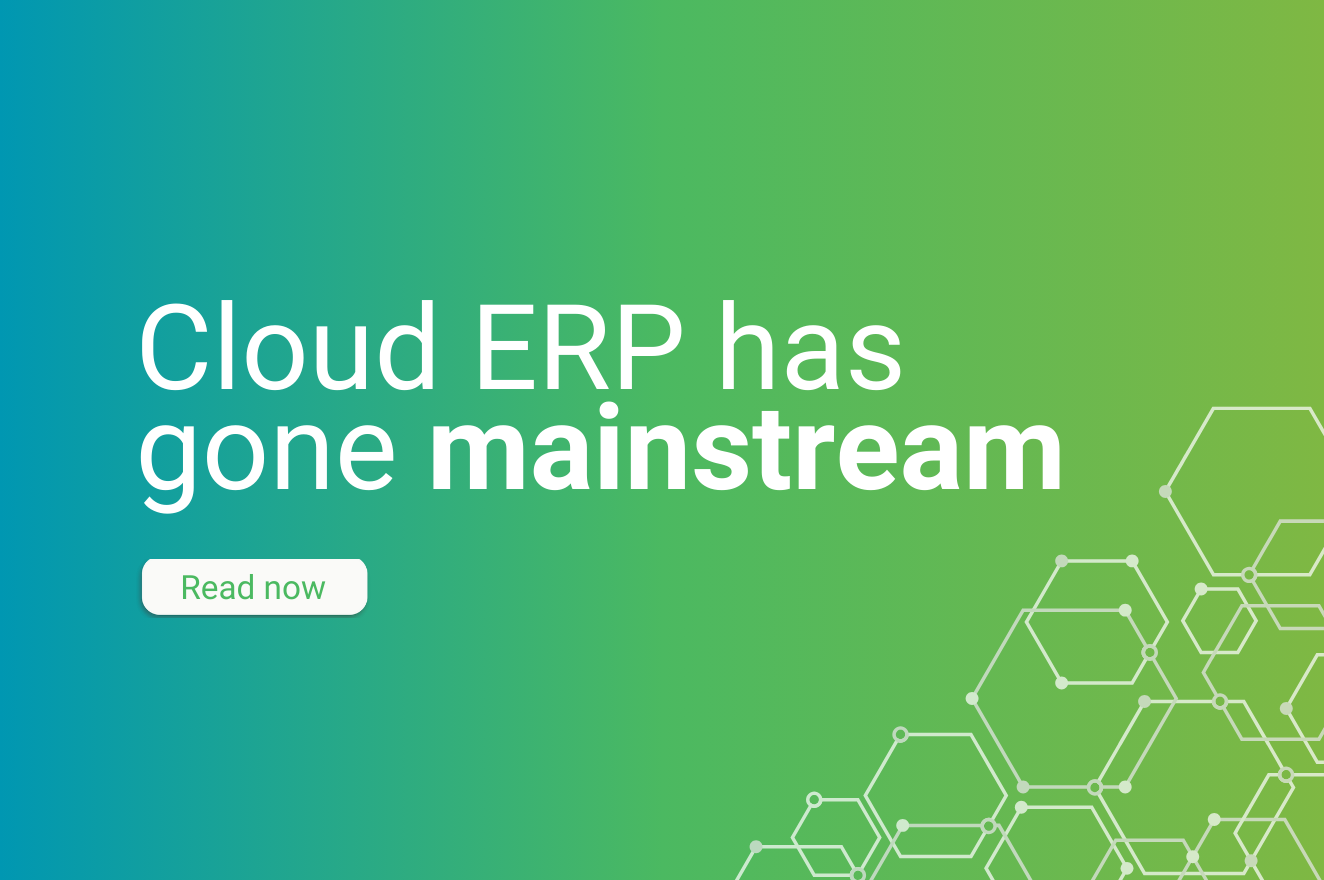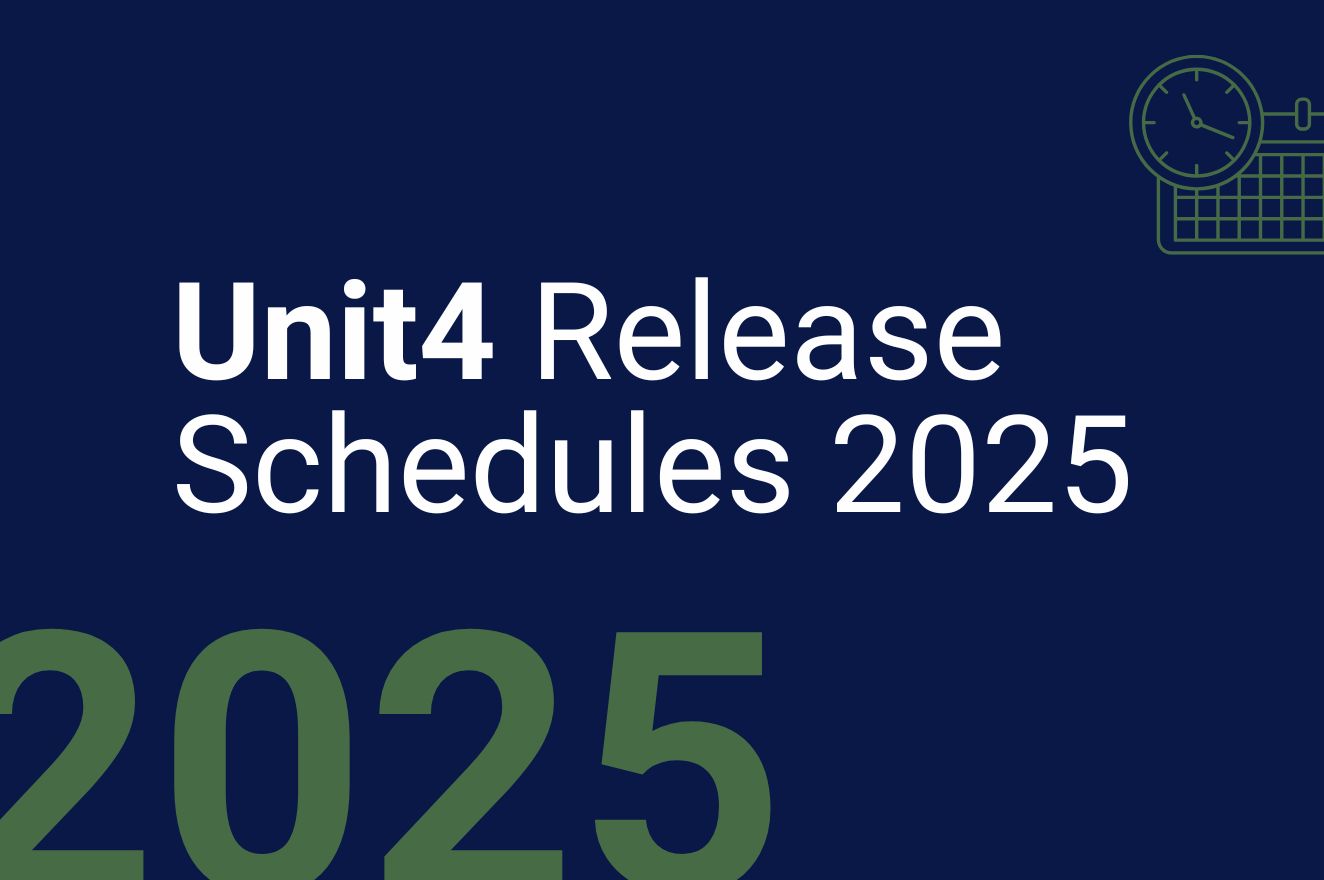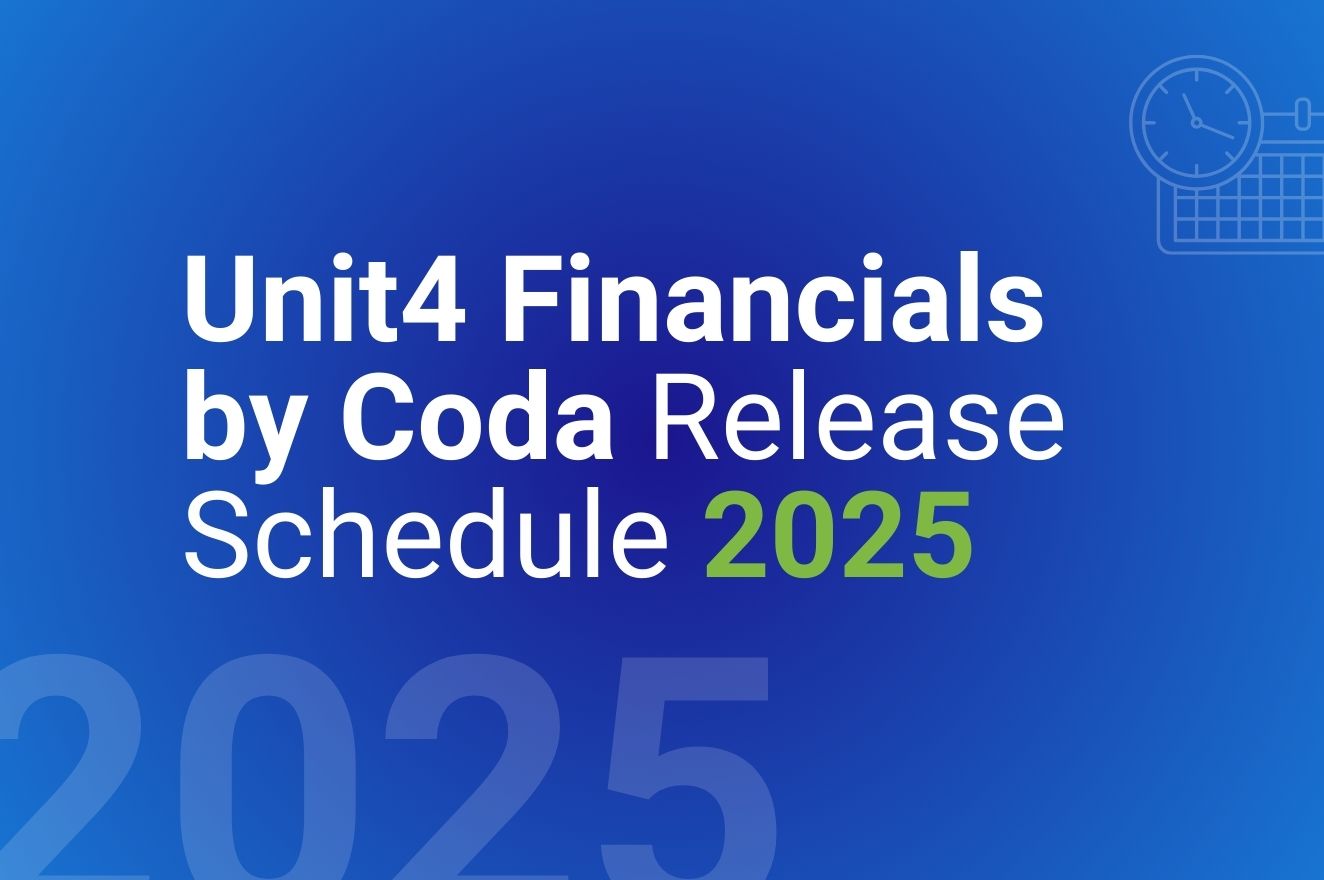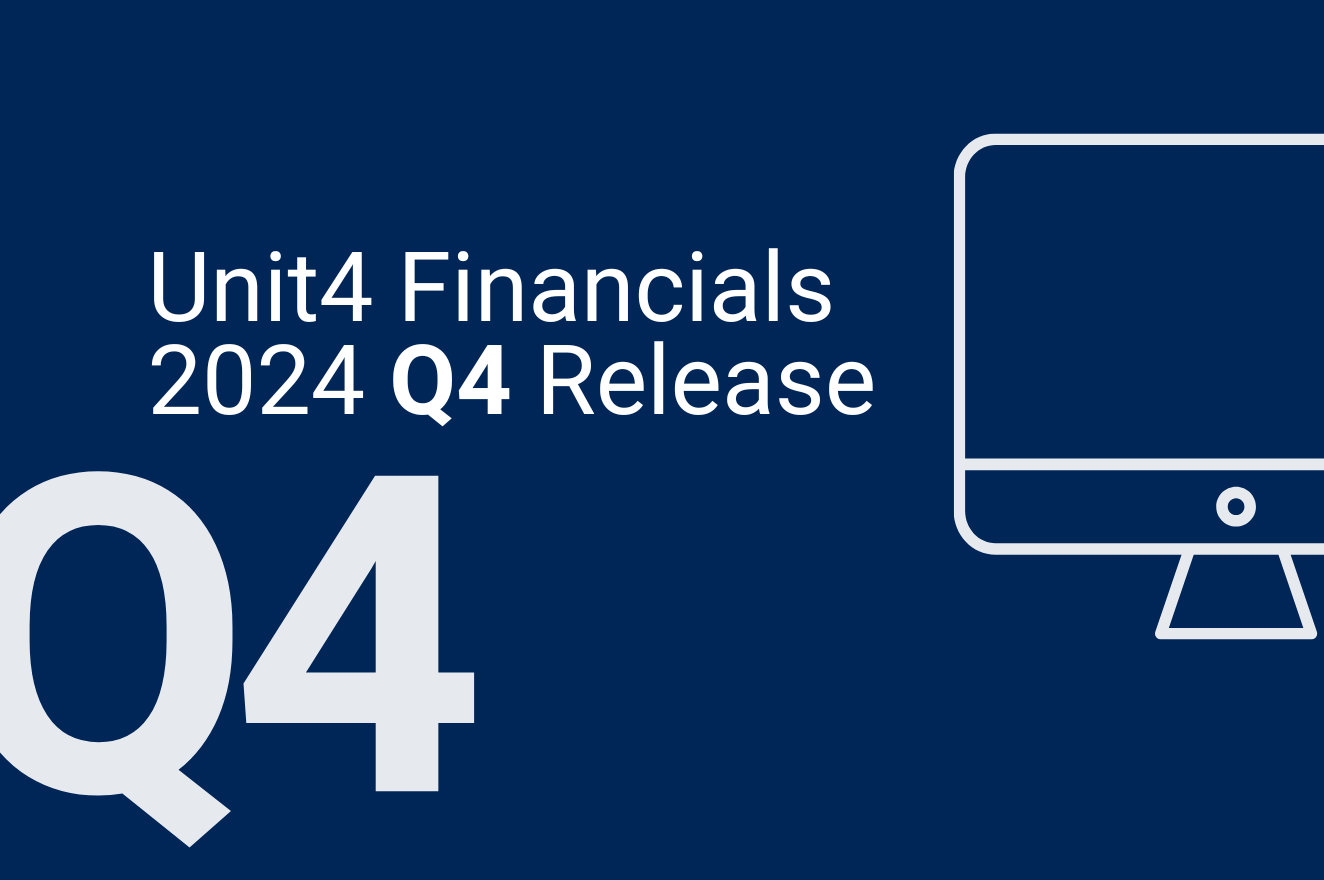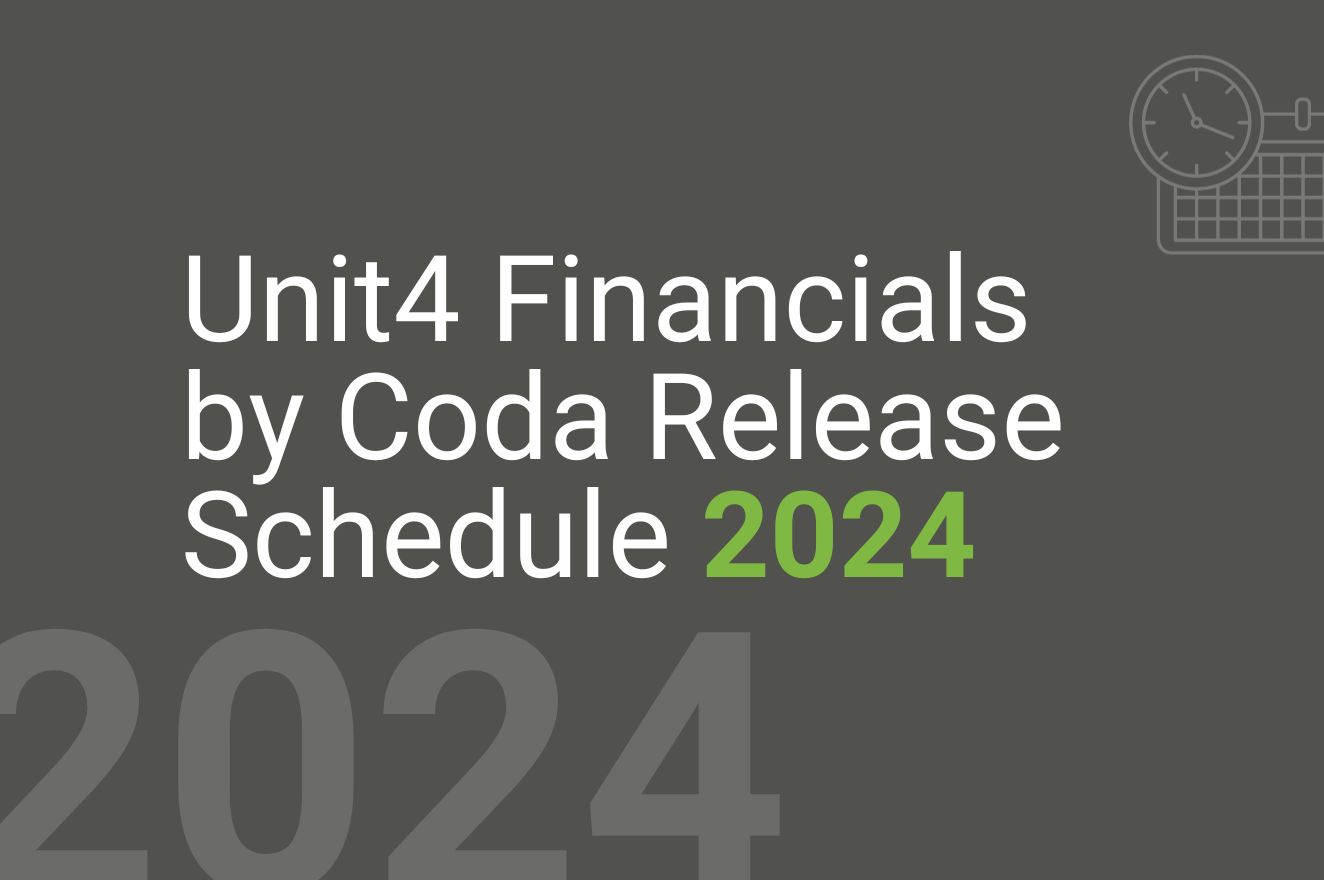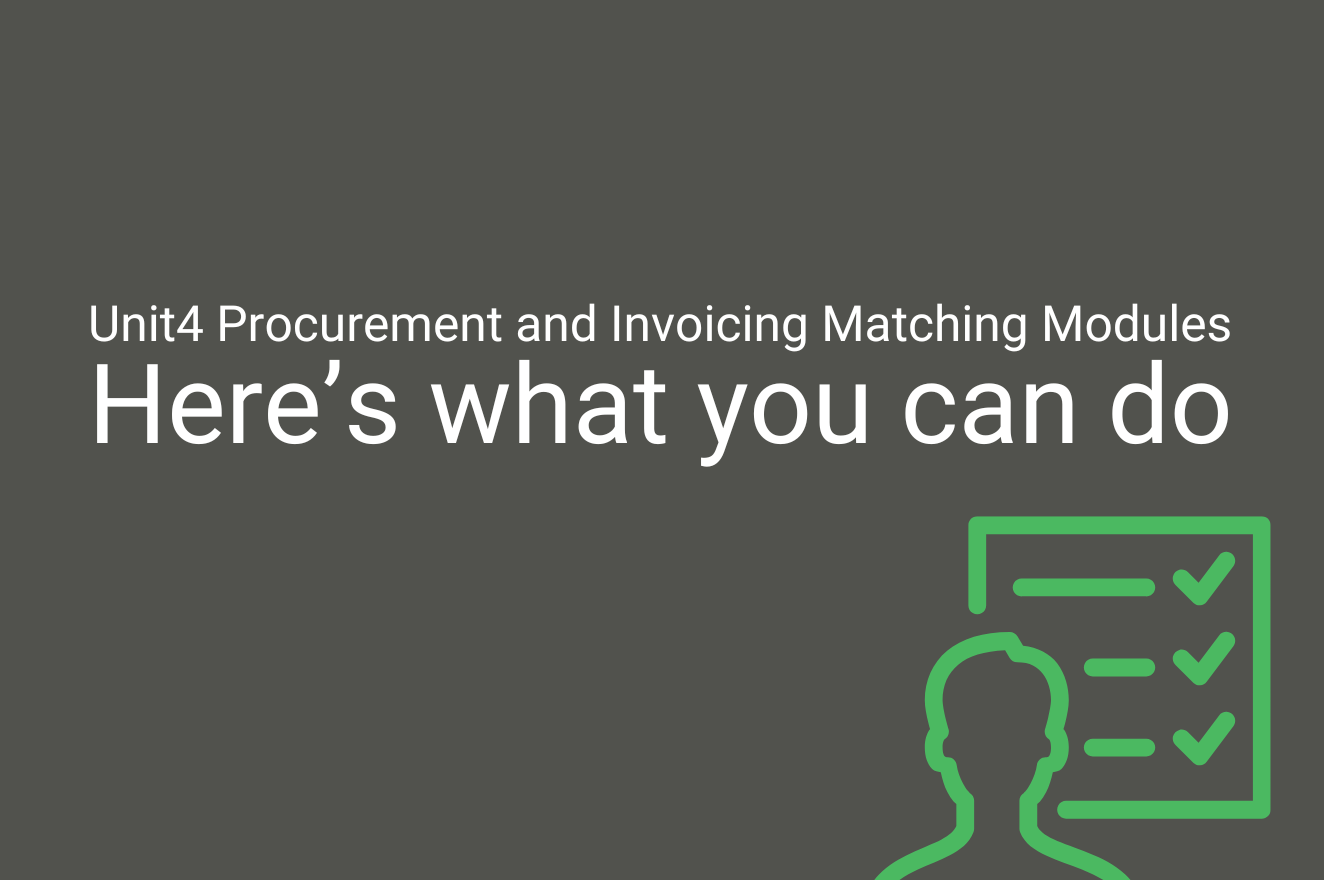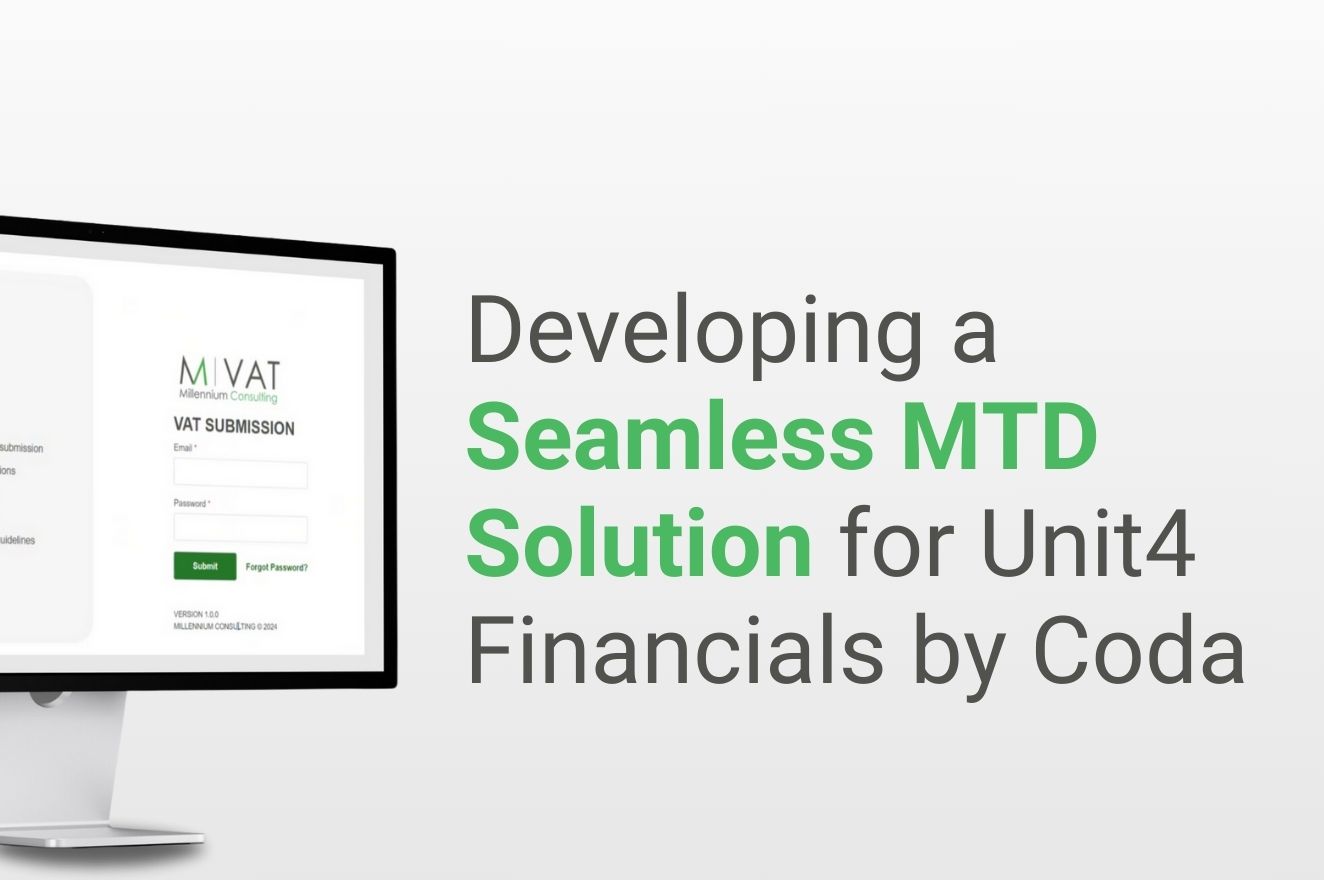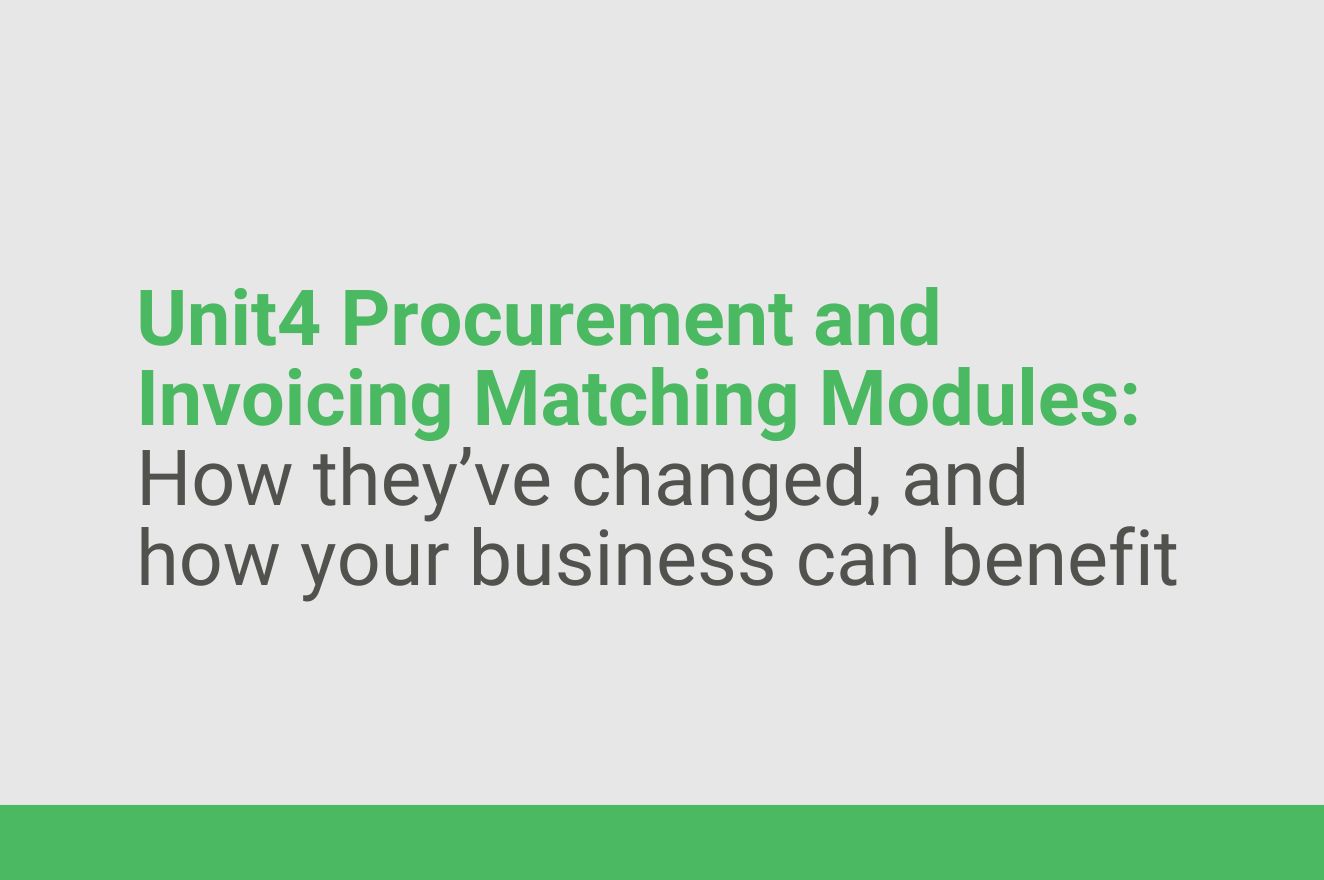Cloud ERP has gone mainstream
Cloud ERP has gone mainstream
Cloud ERP (Enterprise Resource Planning) is now mainstream thanks to its ability to address modern business challenges by providing scalability, flexibility and cost-effectiveness.

Unlike traditional on-prem ERP systems, cloud ERP eliminates the need for substantial hardware and infrastructure investment and pay-as-you-go pricing makes ERP accessible to businesses of all sizes.
Cloud ERP can scale up or down based on business needs, accommodating growth or seasonal fluctuations and employees can access the platform from anywhere, enabling remote work and global collaboration. It can be deployed much faster than traditional solutions, which reduces time to value and ERP providers manage software upgrades, ensuring businesses always have access to the latest features and security enhancements.
Cloud ERP is designed to integrate easily with other cloud-based applications, providing a unified technology stack so that businesses benefit from real-time insights and analytics, enhancing decision-making capabilities. Cloud providers also invest heavily in cybersecurity, often providing more rigorous protection than on-premise systems and leading providers will also ensure adherence to global and industry-specific compliance standards.
The shift to hybrid and remote working models has accelerated the need for cloud ERP systems, which provide access from any device with an internet connection. Cloud ERP supports rapid changes in business operations, making it ideal for companies that operate in dynamic fast moving industries. Cloud ERP providers embed advanced technologies such as AI, ML and predictive analytics, enabling intelligent automation and improved processes. Seamless integration with IoT devices enhances real-time operational monitoring and decision-making.
Cloud-based systems reduce the need for energy-intensive on-premise data centres, aligning with environmental sustainability initiatives. The combination of cost efficiency, adaptability and technological advancement makes cloud an attractive choice for businesses aiming to remain competitive in a fast-paced, digital-first world.
Isn’t it time you considered migrating to the Cloud?
To explore how you can make the Cloud a reality, speak with Millennium Consulting and we can share with you the benefit of our experience working with many of the world’s leading organisations on their Cloud journeys.
Unit4 Release Schedules 2025
Unit4 Release Schedules 2025
Unit4 Financial Planning & Analysis Release Schedule 2025
Please find below the preliminary release schedule of FP&A 2025
| 2025 | Non-production (Preview & Acceptance) | Production |
| Q1 | 18th March | 26th/27th April |
| Q2 | 17th June | 19th/20th July |
| Q3 | 16th September | 25th/26th October |
| Q4 | 9th December | 24th/25th January |
- Data Centre: SaaS Azure
- Product: U4FPA
- Deployment option: Shared, Dedicated
- Environment types: Preview, Acceptance, Production
Please note that this is a preliminary schedule and is subject to change.
ERR CR Release Schedule 2025
Please find below the preliminary release schedule of ERP CR 2025
| 2025 | Preview | Acceptance | Production |
| Q1 | 24th March | 21st April | 25th/26th May |
| Q3 | 22nd September | 27th October | 22nd / 23rd November |
- Regions: Worldwide
- Products: ERP CR
- Data Centre: SaaS Azure
- Deployment option: Shared, Dedicated
- Environment types: Preview, Acceptance, Production
| 2025 | Non-production (Preview & Acceptance) | Production |
| Q1 | 24th March | 26th May |
| Q3 | 22nd September | 24th November |
- Regions: Nordics
- Products: ERP CR
- Data Centre: Nordics
- Deployment option: Public, Dedicated
- Environment types: Preview, Acceptance, Production
Please note that this is a preliminary schedule and is subject to change.
A detailed overview of the release scope and hourly schedule will be published after the official Release announcement on Community4U.
Unit4 Financials by Coda Continuous Release
Please find below the preliminary release schedule of Unit4 Financials by Coda 2025
| 2025 | Preview | Acceptance | Production |
| Q1 | 18th March (R1)
22nd/23rd April (R2) |
25th March (R1)
7th/8th May (R2) |
24th/25th May |
| Q2 | 17th June | 24th June | 19th/20th July |
| Q3 | 16th September | 23rd September | 25th/26th October |
| Q4 | 9th December | 16th December | 24th/25th January |
- Data Centre: SaaS Azure
- Product: U4F
- Deployment option: Shared, Dedicated
- Environment types: Preview, Acceptance, Production
Please note that this is a preliminary schedule and is subject to change.
Unit4 ERPx Release Schedule 2025
Please find below the preliminary release schedule of ERPx 2025
| 2025 | Non-production (Preview & Acceptance) | Production |
| Q1 | 17th March from 5.00 am to 5:00 pm UTC – United States/Australia/ Norway
18th March from 05.00 am to 5:00 pm UTC – Europe/United Kingdom/ Canada |
26th April from 5:00 pm to 27th April 05.00 am UTC – all regions |
| Q2 | 16th June from 05.00 am to 5:00 pm UTC – United States/ Australia/ Norway
17th June from 05:00 am to 5:00 pm UTC – Europe/United Kingdom/ Canada
|
19th July from 5.00 pm to 20th July 5.00 am UTC – all regions |
| Q3 | 15th September from 5.00 am to 5.00 pm UTC – United States/Australia/ Norway
16th September from 05:00 am to 5:00 pm UTC – Europe/United Kingdom/ Canada
|
18th October from 5.00 pm to 20th July 5.00 am UTC – all regions |
| Q4 | To be updated | To be updated |
Please note that this is a preliminary schedule and is subject to change.
Source-to-Contract Release Schedule 2025
Please find below the preliminary release schedule of Source-to-Contract 2025
| 2025 | Non-production (Preview) | Acceptance | Status |
| Q1 | 12th March | 16th March | Planned |
| Q2 | 11th June | 15th June | Planned |
| Q3 | 10th September | 14d September | Planned |
| Q4 | 3rd December | 7th December | Planned |
- Regions: EU, Australia, Singapore
- Products: Source-to-Contract
- Data Centre: Amazon Web Services and Google Cloud Platform
- Deployment option: Shared
- Environment types: Non-production (Preview) & Production
Please note that this is a preliminary schedule and is subject to change.
Why choose Millennium for Unit4?
As an Elite Unit4 Partner with over three decades of experience in Change Management, we bring expertise in designing, implementing, and supporting the right Unit4 solution for your business. Unlock the full potential of your Unit4 solution by partnering with Millennium – your trusted transformation partner.
Unit4 Financials by Coda Release Schedule 2025
Unit4 Financials by CodaRelease Schedule 2025
Unit4 Financials by Coda Continuous Release
Please find below the preliminary release schedule of Unit4 Financials by Coda 2025
| 2025 | Preview | Acceptance | Production |
| Q1 | 18th March (R1)
22nd/23rd April (R2) |
25th March (R1)
7th/8th May (R2) |
24th/25th May (R2) |
| Q2 | 17th June | 24th June | 19th/20th July |
| Q3 | 16th September | 23rd September | 25th/26th October |
| Q4 | 9th December | 16th December | 24th/25th January |
- Data Centre: SaaS Azure
- Product: U4F
- Deployment option: Shared, Dedicated
- Environment types: Preview, Acceptance, Production
Please note that this is a preliminary schedule and is subject to change.
Why choose Millennium for Unit4 Financials by Coda?
We are an Elite Unit4 Partner with more than three decades of experience working with Unit4 Financials by Coda. That means we have the knowledge and experience to design, implement and support the right Unit4 Financials solution for your business.
Unit4 Financials 2024 Q4 Release
Unit4 Financials by Coda 2024Q4 was made available on 3rd December 2024.
The new release contains all the previous Unit4 Financials by Coda functionality, new features, security updates, and customer-identified fixes to extend the best-in-class software solution. Unit4 has addressed many customer-reported issues and hence always encourages customers to upgrade to the latest release.
Highlights of the 2024Q4 release include:
Administration:
Hyperlink on Print Formats
It is now possible to have a hyperlink on a print format.
Finance:
Element Master
The Credit note document and Mapping master can now be specified on a Supplier element for use in Electronic Invoicing.
Company Master
The Credit note document and Mapping master can now be specified on the Company for use in Electronic Invoicing.
Electronic Invoicing:
API
The Electronic Invoicing REST resource is now available to allow authorized users to submit a UBL Invoice or Credit Note to Unit4 Financials by Coda.
Invoice Maintenance
The document type is now displayed in the Invoice Maintenance grid.
It is now possible to delete rows from within Invoice Maintenance.
Public API:
REST API
A new suite of REST API functions is now available.
The REST API follows the same business structure as the XMLi and SOAP API options, so each functional operation available in those integration methods is also available in the REST API.
Technical:
Security Updates
A vulnerability in the ExtJS user interface library has been resolved.
HTTP security headers (Cross-Origin-Resource-Policy and Permissions-Policy) have been added to the WildFly setup scripts as default.
A third-party library, Apache XML Graphics FOP, used in the printing functionality has been updated to improve security.
Deprecated features:
The .NET router has been deprecated. The final release has not been determined.
32-bit XL is deprecated and will be removed in the 2025Q1 Release. We recommend the use of 64-bit XL.
The Integration Toolkit Command Centre module (ITK) has been deprecated and will be removed in a future release. The final release has not been determined.
General Fixes/Updates:
- It is no longer possible to delete the user master which is registered as the system user in Application Parameters.
- Table Link Document Housekeeping now deletes the flexi field data when the table naming does not match the flexi field master code.
- Print Formatter Print functionality has been corrected.
- The Document approver field is now populated in Browse Details when this field is set on the presenter.
- Microsoft SQL Server Hint Masters now work correctly when selecting data for the Pay/Collect process.
- Where Intray modification is prevented, the user can now auto-post from Intray to Books for manual tax and Intercompany documents.
- In Finance Input the ‘Resolve‘ button will also be triggered on leaving the field if the value in the field has not been modified.
- Shared master audit no longer shows errors for Electronic Invoicing account mappings on recently created element masters.
- When confirming reminder letters using webservices the
GetProgressservice now returns the appropriate response - Reporting Codes and Element Status are now correctly displayed in Browse Balances when the description is more than 20 characters. A serious error no longer occurs.
- The selector operator ‘Is blank‘ is now available in XL when using Generic Browse.
- Property
com.coda.common.app.attachment.http.checkRemoteis now documented in the Configuration Settings Guide. - The
Strict-Transport-SecurityHTTP header is now correctly set. This fix particularly affects users of WebSphere where later fix packs now perform validation of HTTP header names. - Memory usage when exporting data to Microsoft Excel has been reduce, e.g., exporting data from Browse Details.
Further details on the new features, security updates and reported issues can be found in the release documentation.
The release documentation for this release (and previous releases) can be found in the documentation area on the community.
The software can be downloaded from the “Software” tab on Community4U.
Release dates for Cloud users
Unit4 Cloud customers are notified by Unit4 Cloud support when their pre-production and production systems will be updated. This information can also be found within the Cloud Services – Release Schedules area.
View the 2024 Release Schedule here
The Release Notes detailing the fixes and features within this release can be found in the Documentation area on Unit4’s Community 4U.
Are you making the most of Unit4 Financials by Coda?
Our Systems Health Check is designed to help you identify areas where you may be able to improve performance and ensure you extract the maximum benefit from your investment in Unit4 Financials by Coda.
Unit4 Financials by Coda Release Schedule 2024
Unit4 Financials by Coda is maintained via continuous release cycle of the software. An .iso is available from within Unit4’s Community 4U.
Local / Additional modules are released independently of the above release cycles and are notified via Unit4’s Community 4U. The maintenance of local products at v14 ceased at the end of December 2022.
Below you will find the currently planned release availability dates of Unit4 Financials by Coda Continuous Release during 2024. The dates below are advising of the date the software is released from Engineering and downloadable by our on-premise customers.
Unit4 Financials by Coda Continuous Release
| 2023Q4 Release | Released 5th December 2023 |
| 2024Q1 Release
2024Q1 Release 2 |
Released 12th March 2024
Released 15th April 2024 |
| 2024Q2 Release
2024Q2 Release 2 |
Released 11th June 2024
Released 1st July 2024 |
| 2024Q3 Release | Released 10th September 2024 |
| 2024Q4 Release | Released 3rd December 2024
(The final release available for on-premise customers) |
These dates can sometimes be subject to alteration.
Unit4 Financials by Coda, Cloud Upgrades Schedule 2024
Unit4 Cloud customers are notified by Unit4 Cloud support when their pre-production and production systems will be updated. This information can also be found within the Cloud Services – Release Schedules area.
| 2024 | Preview | Acceptance | Production (Planned Maintenance Window) |
| Q1 | Tuesday 19th March 2024 | Tuesday 26th March 2024 | 20th /21st April 2024 |
| Q1 R2 | Tuesday 19th March 2024 | Tuesday 26th March 2024 | 25th/ 26th May 2024 |
| Q2 | Tuesday 18th June 2024 | Tuesday 25th June 2024 | 20th /21st July 2024 |
| Q2 R2 | Monday 1st July 2024 | Friday 5th July 2024 | 20th /21st July 2024 |
| Q3 | Tuesday 17th September 2024 | Tuesday 24th September 2024 | 19th /20th October 2024 |
| Q4 | Tuesday 10th December 2024 | Tuesday 17th December 2024 | 25th /26th January 2025 |
These dates can sometimes be subject to alteration.
On 17th October 2023, Unit4 announced to its customers that it has taken a strategic decision to provide only Software as a Service (SaaS) solutions going forward. With Cloud being industry standard, we are transitioning on-premises Unit4 ERP, Unit4Financials by Coda, and Unit4 FP&A to being fully cloud based solutions.
With that, these solutions will no longer be supported or maintained by Unit4 with effect from 31st December 2024. Millennium and Unit4 are offering all on-premise customers a clear and attractive opportunity to migrate to the Unit4 Cloud.
Legacy software versions
v14
Release 19 – Released 28th October 2022
Critical bug fix end date has been reached for v14 – Please contact your Unit4 Account Manager to discuss upgrade options to Unit4 Financials by Coda Continuous Release.
v13
Service Pack 23 – Released 27th September 2019
Critical bug fix end date has been reached for v13 – Please contact your Unit4 Account Manager to discuss upgrade options to Unit4 Financials by Coda Continuous Release.
Why choose Millennium for Unit4 Financials by Coda?
We are an Elite Unit4 Partner with more than three decades of experience working with Unit4 Financials by Coda. That means we have the knowledge and experience to design, implement and support the right Unit4 Financials solution for your business.
Unit4 Procurement and Invoicing Matching Modules: Here’s what you can do
Unit4 Procurement and Invoicing Matching Modules
Here’s what you can do
Users of Unit4 Financials by Coda (U4FbC) can take advantage of two valuable add-ons to streamline purchase order processing and invoice matching.
The U4FbC Procurement module standardises, automates and applies controls across all stages of procurement linked to indirect spend. A further module, Invoice Matching, facilitates automated three-way matching, and can be used for both indirect spend and stock-related invoices.
For an overview of both modules, be sure to take a look at this POP and PIM guide. To accompany that guide, here’s a deep dive into some of the key features offered by these modules and how those features translate into real-life benefits for your finance team.
Commitment accounting
An accidental budget overrun is something no finance manager wants to deal with – especially if it has arisen as a result of a pending payment being overlooked.
Commitment accounting refers to the ability to track and manage future financial obligations. Getting it right involves recording future obligations as soon as they arise, ensuring that funds are reserved and can’t be spent elsewhere.
One of the best aspects of the U4FbC Procurement module is the fact that it makes you much better equipped to track and account for committed future spend. Two things are essential for this: visibility and control. The U4FbC Procurement module gives you both.
Visibility stems from the fact that Unit4 Financials by Coda is built around a single integrated database. This allows you to analyse your commitments in the round: for any account, you can see what you’ve spent and will spend as a consequence of approved purchase orders. This means you can instantly and accurately compare your budget against committed spend.
The control element ensures you are warned of possible budget overruns before managers enter binding commitments. Let’s say a departmental manager submits a requisition for approval. The system automatically checks this against the budget to see if sufficient funds are available. We can configure the system for you so that if there’s going to be an overrun, relevant budget holders and other stakeholders are immediately alerted. You can then decide whether to approve the requisition or put it on hold.
Workflow authorisation
The Procurement and Invoice Matching modules work the same way as the main U4FbC platform, so users can get to grips with them immediately.
As with Unit4 Financials by Coda, the Procurement module uses position hierarchies to determine authorisation workflows. A position determines the monetary authorisation limit for different categories of employees. So, for example, you might have three positions: £10k, £50k, and £100k, with employees assigned to positions according to their department and level of seniority.
The system also lets you distinguish what employees can sign off on based on elements of responsibility. For instance, you might have two managers at the same seniority tier, both of which are assigned a £10k spend position. Thanks to element responsibility, you can ensure that, for example, an IT manager can only sign off on IT-related business, and the finance manager can only sign off on finance-related expenditure. This way, you can build an approvals hierarchy matching your organisation’s approval matrix.
Accruals
When goods or services are received, but the supplier’s invoice has not yet been issued or processed, Unit4 Invoice Matching can automatically generate an accrual entry. This means the cost of the received item is reflected in your accounts even before the invoice is matched and paid.
Of course, not every expenditure item needs a purchase order (utilities, rent, and routine employee reimbursements are just some examples). For these types of expenses, a non-PO invoice will only be accrued at month-end if it hasn’t been approved through the workflow by that time.
In U4FbC, selectors control all of this. Throughout the system, you use selectors to filter, retrieve, and organise data and control all activities – whether it’s reporting, payment runs, currency, or revaluation. The Procurement and Invoice Matching modules both use selectors in the same way as the rest of the Unit4 ecosystem, so when you’re putting these add-ons to work for the first time, it’s very much ‘business as usual’, with no steep learning curve.
The Procurement module is designed to consolidate procurement processes linked to indirect spend (i.e. not inventory). Therefore, it makes sense for many businesses to implement this module alongside their inventory/stock control system and apply the Invoice Matching module to both. The use of selectors facilitates this, enabling us to set up different accrual control accounts for you and using the selectors to determine which account different categories of invoice are sent to.
Intercompany capabilities
The platform’s comprehensive intercompany capabilities are one of the significant benefits of U4FbC, making it as straightforward as possible to automate, simplify, and manage transactions between different entities within your business. This functionality extends to the Procurement and Invoice Matching modules.
Let’s say a manager raises a purchase order comprising three lines relating to three separate companies within the business. Thanks to the intercompany purchase order option in Procurement, you can raise a single purchase order, but each expense line goes to the P&L of the corresponding entity. In contrast to many systems which require you to carry out intercompany allocations after the event, it’s all handled at the start of the process: you tell the system which company each expense line relates to, and the platform does the rest.
Self billing
Self billing means you can process transactions without waiting for third parties to send through their invoices. It’s common when you have a long-standing relationship with a supplier, particularly involving frequent, repeat transactions.
Unit4 Procurement and Invoice Matching both support self billing. For example, you raise a PO in the Procurement module. On fulfilment, a goods received notice (GRN) is generated. You can also configure the system to automatically generate an invoice on the supplier’s behalf. The Invoice Matching module will then match the GRN to the invoice, post it to your account, and automatically email the invoice to the supplier for their records.
Deferred matching
An excellent invoice matching tool should reflect the realities of commercial relationships. And, of course, in contrast to fulfilment taking place via a single neat event, it’s very common for it to happen in stages, with invoicing based on things like batch delivery, services required, or project milestones met.
Under these scenarios, identifying discrepancies between invoices, purchase orders, and fulfilment records becomes much more challenging. This is why you need robust deferred matching capabilities, which Unit4 Invoice Matching provides.
For example, let’s say you have engaged a third party marketing company. You’ve negotiated a fixed fee of £100k to cover a marketing campaign and agreed on an advance payment of £10k.
Under this scenario, you can raise a PO of £100k using the Procurement module. At the same time, the marketing company invoices you £10k for the advance payment. But of course, you haven’t received any services yet, so there’s no fulfilment for it to be matched against.
This is where the deferred matching functionality comes into play. The £10k invoice will be posted to your balance sheet, and the payment will be processed. However, it is also posted to a dedicated prepayment account. Later, upon completion of the contract, the marketing company issued an invoice for the remaining £90k. This is matched, and the system automatically takes the £10k out of the prepayments account and posts it to the same expense item as the £90k.
What next?
These capabilities – commitment accounting, deferred matching, accruals and more are available out-of the box once you have the modules in place. You can find out more here.
To explore implementation and licensing options, speak to Millennium Consulting today.
Developing a Seamless MTD Solution for Unit4 Financials by Coda
Developing a Seamless MTD Solution for Unit4 Financials by Coda
When we embarked on creating our Making Tax Digital (MTD) solution, our goal was to build a product that integrates seamlessly with Unit4 Financials by Coda. In this post, Chris Peall, Director of Professional Services at Millennium Consulting, shares the vision behind the software development.

Over the years, many of our customers have expressed the need for an MTD-compliant solution, as Unit4 Financials by Coda doesn’t have a built-in option. While several third-party solutions exist, we were committed to developing one tailored for Unit4 Financials by Coda, rather than trying to make an existing solution fit. We aimed to provide a true plug-and-play experience, requiring minimal configuration so that customers could achieve MTD compliance swiftly and efficiently.
Longevity is key as HMRC requirements will change and customers need a platform that can adapt easily with the minimum disruption possible. Our HMRC recognised product does just that.
By focusing on this niche, we’ve designed a product that fits perfectly within the Unit4 Financials ecosystem and simplifies the transition to digital tax reporting for finance teams.
Our three key objectives:
Simple
A key priority for us was creating a product that was simple and easy to use. Making Tax Digital (MTD) doesn’t have to be complicated. We aimed to develop an intuitive and user-friendly tool, enabling finance teams to comply with MTD requirements without hassle.
Secure
We live in a world with an increased threat to our cyber and technical estate; our Principal Information Security Consultant was involved in every step to ensure that MVAT meets the highest security standards, both now and in the future. Handling sensitive financial data requires a robust security framework, and we’ve ensured that MVAT locks down data effectively while maintaining its ease of use.
Seamless
Our solution seamlessly takes data from Unit4 Financials by Coda and passes it to HMRC. We know validation and approval are critical steps, so we’ve ensured the process integrates smoothly. Our goal was to create a solution that feels like a natural extension of the Unit4 Financials by Coda platform, allowing users to manage tax submissions with minimal disruption to their existing workflows.
Watch this demo of MVAT: Millennium’s Making Tax Digital software
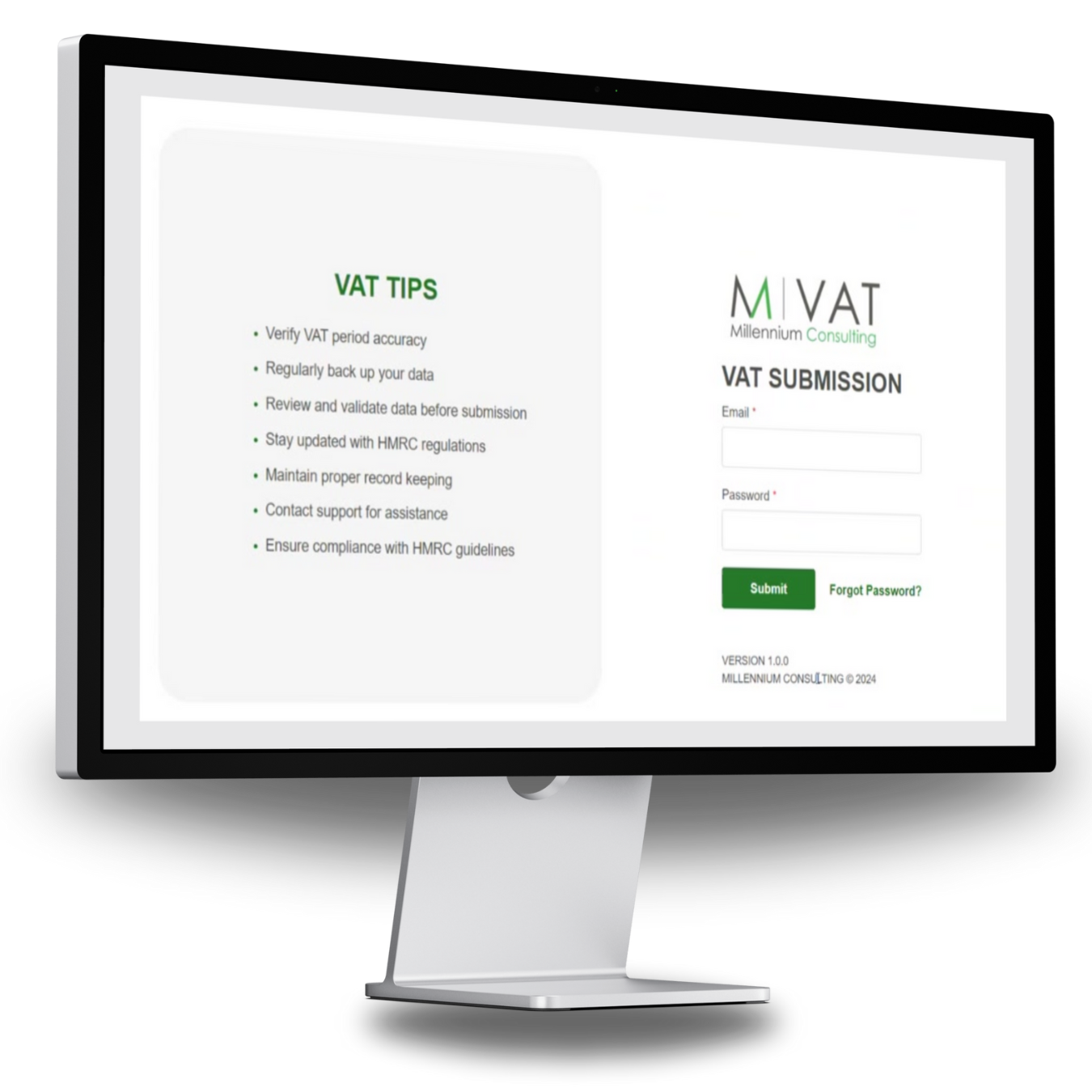
Learn how to:
Submit VAT Returns Mapping Unit4 Financial by Coda set up User Management Additional HMRC Reports Submission Audit
Unit4 Procurement and Invoicing Matching Modules
POP and PIM
Unit4 Procurement and Invoicing Matching Modules: How they’ve changed, and how your business can benefit
Manual purchase order processing and invoice matching are among the most time-consuming and least controlled activities handled by finance teams. So how do you improve them? To reduce your admin workload, streamline approvals, and cut out maverick spending, Unit4 has the answers.
Here’s a closer look at Unit4’s Procurement and Invoice Matching functionality, how and why they are structured as two distinct modules, and the benefits they offer to your wider business.
Unit4 Procurement and Invoice Matching: What’s changed over time?
With a function-rich platform like Unit4, it’s easy for individual features – including potentially very useful add-ons – to fly under your radar. This is especially pertinent to long-term users of Unit4 Financials by Coda: courtesy of Unit4, enhancements have come thick and fast over recent years, and there may easily have been some you’ve missed!
If you first encountered Coda a few decades ago, you may have noticed a procurement and invoice matching module was available. However, built by Science Systems and badged as a Coda product, this was a separate application from the core Coda system. Interfacing ensured data exchange between Coda and the procurement module, but they were essentially two independent systems.
The significant change came in 2011 with the release of Unit4 Financials by Coda, Version 11. From then on, Unit4 offered (and still provides) two separate optional modules, one for procurement, and one for invoice matching. Unlike the previous app, these modules are both integrated within the core Unit4 Financials platform, sharing the same database and business logic.
For users, this means seamless processes with no duplication of effort. You create a new supplier, fill in the relevant details, and the new record feeds through automatically to the procurement and invoice matching modules.
Why are Procurement and Invoice Matching two separate modules?
Purchase order processing and the need for invoice matching often go hand-in-hand. So why is there a separate module for each one?
First off, let’s take a look at what each module covers:
Procurement
The module streamlines and consolidates procurement processes linked to indirect spend (e.g. supplies, equipment, and facilities management spend). Unit4 Financials by Coda is a financial management system (not a stock control system), so the module is not designed for stock procurement.
It standardises, automates, and applies controls across all stages of the procurement process. Key features include automatic routing of requisitions through an approval workflow, applying predefined rules and spending thresholds, set by you.
After approval, the system automatically generates purchase orders with all relevant info inputted. Open POs can be tracked within the system to monitor outstanding orders.
Invoice Matching
This module can be used alongside the Unit4 procurement module and can also integrate with third-party systems, including stock control systems.
The module facilitates automated three-way matching (i.e. comparing a purchase order, goods received note (GRN) and invoice) before payment is made.
Users can apply customised rules for automatic matching (e.g. payment amounts and quantities), with tolerance levels for any discrepancies.
The Procurement module performs a distinct job, i.e. automating and streamlining processes linked to indirect spend. The Invoice Matching module has wider applicability, in that it can be used for matching and reconciling both indirect and stock-related invoices. For this reason, Unit4 offers them as two distinct modules.
When you raise a purchase order in the Procurement module, the user will create a GRN on receipt of the goods. The system then automatically creates a logical receive note (LRN) in the invoice matching module. You can also configure your stock control system or other third-party procurement systems to send LRNs to the Invoice Matching module in the same way through web services.
This separation ensures flexibility for different workflows and business needs. Some businesses will choose to implement the Unit4 Procurement module for indirect spend alongside their procurement/inventory system and apply the Invoice Matching module to both. Others may have very few indirect spend transactions to administer, meaning a dedicated indirect procurement module is unnecessary. They may, however, have a large volume of inventory invoices to manage, in which case implementing Unit4 Invoice Matching – integrated with their third-party procurement/inventory system – makes perfect sense.
Benefits of Procurement and Invoice Matching Software
Effective and timely approvals
‘Why wasn’t I made aware of this spend before the budget was set? Why am I only being told of it now? Why are we still using this supplier?’ With manual or ad-hoc approvals, there’s the constant risk of maverick spend, i.e. employees committing to purchases without approval and without budget holders being able to control what’s happening.
A procurement module empowers you to standardise and streamline the approvals process. Once a PO has been issued, it is immediately routed to the relevant budget holder or manager. Different levels of approval can be applied based on, for instance, spend category or amount. Meanwhile, integration with Unit4 Financials means you can check whether sufficient budget is available before allowing the request to proceed. The result? You decide on the approval rules you want to apply, and the system ensures they are adhered to.
Enhanced internal controls
For inventory, it’s not always a simple case of placing an order, receiving the items in one neat dispatch, and settling the invoice. Multiple shipments, partial deliveries, swaps, and supplementary orders are all to be expected. But they all create additional variables in terms of keeping track of what has been received and paid for. It’s also where the scope for error and wasted cost is greatest.
An invoice matching solution makes it much easier to handle these complexities through customised controls. This includes the ability to track and manage partial shipments, ensuring that the invoiced amount matches the quantity of items received. It is also possible to apply fine-grained matching rules to handle multiple layers of conditions, such as different tolerance levels for different product categories, separate rules for high-volume or low-volume items, and differentiation between full and partial deliveries.
Better cost management
For any finance manager charged with cutting out wasted spend, Unit4’s Procurement and Invoice Matching modules can offer easy wins in multiple areas.
As we’ve seen, the implementation of tightly controlled approval workflows makes it easier to control budget overspending. It reduces the chances of employees going off-piste and ignoring your procurement policies.
Beyond this, accurate and error-free invoice matching makes it much easier to ensure that payments made are a reflection of goods actually received, avoiding not just overpayments but also penalties for late payments.
The other big advantage from a costs management perspective relates to visibility. Linking to both the wider Unit4 ecosystem and any other applications you have in play, with enhanced procurement and invoice matching capabilities, you are much better equipped to track purchasing activity in real time. This can give you valuable intel on areas where costs can be reduced, whether it’s by adjusting purchasing volumes or switching to more cost-effective and reliable suppliers.
Find out more
To explore implementing these modules, speak to us today. You can get more information about the solution’s procurement and invoice matching capabilities here:
(Article written and published September 2024)
MVAT Q&A
Your MVAT questions answered!
MVAT: Millennium’s Making Tax Digital Software for Unit4 Financials by Coda
How does MVAT account for partial exemption and special method recovery?
Partial and special recovery methods can be configured within Unit4 Financials by Coda, allowing MVAT to output correctly to HMRC.
How does this deal with groups, i.e. different companies set up in Unit4 Financials by Coda?
MVAT can handle VAT groups (I.e. a single VAT registration) as a single report combining several Unit4 Financials by Coda companies.
How does this handle other adjustments, such as the Capital Goods Scheme?
Any adjustments made in Unit4 Financials by Coda, such as changes to the initial VAT claimed during the adjustment period (e.g., under the Capital Goods Scheme), will be automatically reflected in the MVAT software.
Does the year and period need to be hard-coded in the selector?
With the flexibility in Unit4 Financials by Coda, there are several options, including softdates (which automatically select the current period) or a hard-coded date in the selector; on setup, Millennium's team will find the process that suits you best.
We have multi-currency items; how does the system convert to GBP?
Within Unit4 Financials by Coda, a company reporting VAT is typically configured with GBP as its home currency. All documents associated with this company can be converted to GBP using the foreign exchange rates established in Unit4 Financials by Coda. This conversion occurs within Unit4 Financials by Coda before MVAT requests the relevant information.
We have multi-company details against one VAT number - how will the system consolidate these?
Unit4 Financials by Coda converts everything to the home (functional) currency. MVAT reports the home currency.
What if our home currency is not GBP?
Unit4 Financials by Coda and MVAT can be configured with dual currency in mind, which, if one of the dual currencies is GBP, will allow for correct reporting to HMRC.
How many lines can be uploaded?
100 thousand+.
Is it possible to test this with our transactions before we purchase MVAT?
Yes, testing is possible. We simply need to discuss the terms involved. To initiate this conversation, get in touch:
Does it have to be installed on everyone's laptop?
No, just one installation access via a web browser.
We are part of the Cyber Essentials Scheme, which requires specific password standards and security requirements. Can MVAT meet this standard?
As of the latest update to MVAT, it is now compliant with Cyber Essentials requirements; we are happy to meet with your security or Compliance team and walk them through how MVAT meets these requirements.
One area that we struggle with is Reverse Charge. Should this be dealt with directly in Unit4 Financials by Coda before going into MVAT?
Yes. Unit4 Financials by Coda handles reverse charge.
How many users do I get?
As many as you like, it's not a user license-based product.

Millennium’s Making Tax Digital software
- HMRC Recognised
- Ensures compliance with mandatory MTD requirements
- Seamlessly integrated into Unit4 Financials by Coda
An Overview of Unit4 Financials by Coda Training
An Overview of Unit4 Financialsby Coda Training
If you need to boost your Coda knowledge and proficiency, there are multiple approaches to training that are worth considering (and some of them are even free!).
There are no set rules when it comes to software training. For onboarding, upskilling, and unlocking everything your financial management and accounting software offers, it’s all about finding an approach that matches your organisation’s needs and your preferred way of working.
With this in mind, here’s a closer look at the Unit4 Financials by Coda training options out there…
SME training
To be effective, software training needs to be directly relevant to day-to-day user needs. And especially with a feature-rich solution like Unit4 Financials by Coda, there’s no point in trying to teach every user about every new and existing aspect of it – otherwise, you’re just going to cause training fatigue.
For example, one team member is your core accounting expert. Another handles the bulk of credit management queries. A further team member is your go-to person for asset management. These are all subject matter experts (SMEs). Consider a targeted approach by delivering training to SMEs on aspects of Unit4 Financials by Coda that are directly relevant to their areas of expertise.
SMEs tend to be particularly good at understanding the training content for their peers, so when they pass that knowledge on throughout your team, it makes it more relatable.
Train the trainer
Let’s say a set of new features has been rolled out as part of the Unit4 Financials Continuous Upgrade programme – or you’ve just implemented a new sales invoicing add-on. You don’t have to train the entire finance team to use these features all in one go.
Instead, consider focusing the training on one or a handful of champions. These individuals can then cascade the training to other employees within the organisation as needed. This can be a much more time and cost effective way of distributing the knowledge through the business than training everyone simultaneously.
Use Unit4 resources
There are plenty of Unit4 resources out there.
Unit4’s customer and partner community, Community4U, is one of the best. Comprising dedicated forums devoted to specific Unit4 solutions (including Unit4 Financials) enables you to engage with other customers and partners, get in touch and ask questions, access training resources, and get best practice tips.
(All Unit4 Financials by Coda customers have access to Community4U.)
Online partner training packages
Millennium Consulting can put together a personalised Unit4 Financials by Coda training programme built for your needs, delivered in-person or virtually.
Perhaps your team is due a best practice refresher course to ensure you are making the most of your Unit4 Financials investment. Do you want to explore new possibilities following migration to the cloud? Or do you have a group of new employees who need to be onboarded?
For expert, hands-on and role-specific training delivered by an elite Unit4 Partner, find out what’s possible here: https://millenniumconsulting.com/unit4financialsbycoda/training/
Make use of free webinars!
Workflow functionality, invoice matching, FP&A Lite, how to use hierarchies… if there’s a specific aspect of Unit4 Financials by Coda that you’re unsure about, chances are there’s a recorded webinar or video that explains it. To start exploring, try the following:
- Millennium Consulting’s upcoming events: https://millenniumconsulting.com/events/
- Unit4 Financials User Group: https://financialsusergroup.com/
- Community4U: https://community.unit4.com/
- Millennium Consulting’s YouTube channel: https://www.youtube.com/@millenniumconsulting95
- Unit4’s YouTube channel: https://www.youtube.com/@unit4
Expertise at your fingertips!
From webinars and user guides through to Community4U, there is a large bank of knowledge out there to help you get the most out of Unit4 Financials by Coda. And with Millennium’s flexible, personalised approach to training, you are all set to bridge any knowledge gaps and equip users to get the most from your system.
To discuss your training options, speak to us today.

